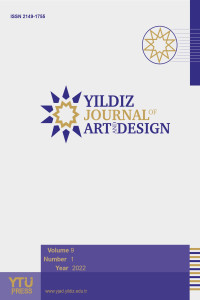An Assessment of the Appropriateness of Selected Logos of Renowned and Small-Scale Brands
This paper focuses on assessing the appropriateness of selected logos of renowned and small scale brands. The paper enunciates the relevance of logos to the public perception of brands. Logos function as signifiers, denotative, point of contact and identifiers. The visual components of logos and the suggestive meanings of shapes which are the building blocks of the pictorial contents are articulated in this study. Thirty (30) logos classified into renowned and small scale brands were randomly selected and subjected to the analysis of thirty (30) formally trained practicing graphic designers and ten (10) experienced printers based in Mushin and Somolu areas of Lagos. The collated data was analyzed using the Statistical Package of Social Science (SPSS). Findings revealed that logos are visual seals that communicate brand promises to the targeted audience, viewers recall simple logos more easily and logos crammed with colours are not appealing. The study recommended visual contents of logos should resonate balance, application colours in logos should be limited to two and logos design should be a product of a sound brand strategy.
Anahtar Kelimeler:
Logo, Simplicity, Distinctness, Versatility, Memorability, Appropriateness
___
- Angyol, M. A. (2015). Development of Alphabet Multimedia Instructional Materials to Enhance Pre-Primary Pupils Education in Samaru Zaria, Kaduna State Nigeria. An Unpublished Masters Dissertation Department of Industrial Design, Ahmadu Bello University Zaria.
- Aslam M. (2006). Are You Selling the right Colour? A cross-cultural review of colour as a marketing cue. Journal of Marketing Communication 12(1) 15-30.
- Adir, Adir and Pascul (2012). Logo design and the corporate identity. Procedia - Social and Behavioral Sciences 51 (2012) 650 – 654
- Bayunitri B and Putri S. (2016). The Effectiveness of Visualization the Logo Towards Brand Awareness. Procedia-Social and Behavioural Sciences 219(2016) 134-139. www.sciencedirect.com
- Branded in Memory (2020). 10 Iconic Logos. 156 Americans. 80 hours of drawing from memory. Retrieved from signs.com/branded-in-memory on 05/09/2020
- Cass J. (2017). Logo Simplicity. Retrieved from justcreative.com on 24/09/2020
- Haviv W (2019). What makes a Logo Great and Iconic. An online interview retrieved from thefutur.com on 14/07/2020.
- Janiszewski C and Meyvis T (2001). Effects of Brand Logo Complexity, Repetition, and Spacing on Processing Fluency and Judgement. Journal of Consumer Research 28(1):18-32. Doi: 10.1086/321945.
- Landa, R. (2010). Graphic Design Solutions. Wadsworth Cengage Learning, Boston, USA.
- Lawless H. (1978). Recognition of common odors, pictures, and simple shapes. Perception & Psychophysics 1978,24 (6),493.495
- Luffarellin J. Stamatogiannakis A. and Yang H. (2018) The Visual Asymmetry Effect: An Interplay of logo design and Brand Personality on Brand Equity. Journal of Marketing Research. https:/doi.org/10.1177/0022243718820548.
- Luffarelli J. Mukesh M. and Mahmood A. (2019). Let the Logo do the Talking: The Influence of Logo Descriptiveness on Brand Equity. Journal of Marketing Research. https:/doi.org/10.1177/0022243719845000.
- Mahajan N. (2014). An Exploration of Imapact of Logo Redesign and Brand Image. Global Journal of Finance and Management. Volume 6, Number 3(2014), pp. 209-216. Research India Publication
- Pimentel, R W. (1996). I don’t know much about design, but I know what I like: An exploratory study of preference for visual images. Working paper, University of Central Florida.
- Ray H. (2019). Simplicity, A Huge Contributing factor to Logo Design. Retrieved from designhill.com on 7/09/2020
- Regan, A. (2011): A brief history of branding. Retrieved at http://www.articlesbase.com/branding-articles/a-brief-history-of-branding-252518.html,on 12/06/2018.
- Stewart Design (2020). Principle of Effective Logo Design: Memorable (Part II). Retrieved on 2/09/2020 from sdidentity.com
- Walsh, F, Page K, and Mittal V. (2006), “Logo Redesign and Brand Attitude: The Effect of Brand Commitment” ACR 2006 Conference, September Orlando, Florida.
- West, E. G. (1978) “Literacy and the Industrial Revolution”, Economic History Review, 31(3); 369-383
- Başlangıç: 2013
- Yayıncı: Yıldız Teknik Üniversitesi
